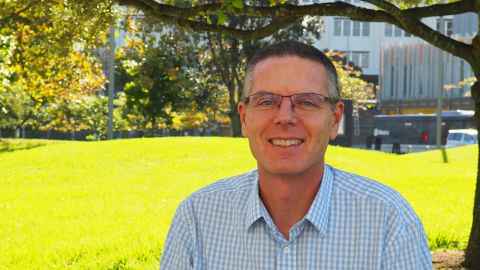Policy changes urged to ensure Aotearoa’s health workforce reflects society
14 March 2023
A new study shows policy changes are urgently needed to ensure the country's future health workforce reflects the community it serves.

Policy changes are urgently needed to ensure Aotearoa’s future health workforce reflects the diverse communities it will serve, a new University of Otago-led study says.
The collaborative research with Waipapa Taumata Rau, University of Auckland, and Auckland University of Technology sets out to provide the sociodemographic profile of students enrolled in their first year of a health professional programme in New Zealand between 2016 and 2020.
Data from about 20,000 students representing 10 of the 23 organisations in New Zealand that provide health professional programmes were analysed, specifically looking at gender, citizenship, ethnicity, rural classification, socioeconomic deprivation, school type and school socioeconomic scores.
Professor Peter Crampton, of the University of Otago, says the study – published in the British Medical Journal Open – shows New Zealand’s health workforce students do not reflect the diverse communities they will serve in several different dimensions.
“There is a systematic under-representation of students who identify as Māori and Pacific, and students who come from low socioeconomic and rural backgrounds,” Professor Crampton says.
The enrolment rate for Māori students is about 99 per 100,000 of eligible population and 100 per 100,000 for Pacific students. That compares with 152 per 100,000 for New Zealand European students.
The results are heavily influenced by nursing, the largest health professional programme in Aotearoa and one with relatively low levels of ethnic and socioeconomic inequity.
“Health professionals from different backgrounds bring their own various strengths and perspectives to the job of providing care, and these perspectives in turn influence their career decisions and professional practice, such as where they choose to work, how they relate to patients, and their understanding of health priorities,” Professor Crampton says.
“Furthermore we believe that the presence in the health system of health professionals from a range of backgrounds will help address biases in healthcare delivery that lead to inequities in health outcomes.
”The under-representation of Māori students is of particular concern given the health sector’s stated commitment to Te Tiriti o Waitangi and to growing the Māori health workforce, he says.
“In light of this evidence, it is unlikely that New Zealand’s health needs and the inequities therein, will be adequately addressed by the current cohort of health workforce students.”
Professor Warwick Bagg, of Waipapa Taumata Rau, University of Auckland, says while the results are concerning, the fix is “eminently achievable".
“Our system for training health professionals can and should be much strengthened by ensuring that Māori and Pacific students, and students who come from low socioeconomic and rural backgrounds, participate in training programmes at least in proportion to their populations in Aotearoa.
”The authors make three recommendations, largely directed at central government agencies responsible for health workforce policies.
They recommend:
- A nationally coordinated system for collecting and reporting on the sociodemographic characteristics of the student health workforce
- Mechanisms be developed to allow the agencies that fund tertiary education to base their funding decisions directly on the projected needs of the health system
- That tertiary education funding decisions be based on Te Tiriti o Waitangi.
“In summary, we recommend that there be a clearer focus on ensuring wider and more representative participation in health professional training courses, and this can be achieved through greater coordination between the education system and the health system. This is eminently achievable,” Professor Bagg says.
Media contact
Jodi Yeats, Kaitohutohu Pāpāho, Media Adviser
M: 027 202 6372
E: jodi.yeats@auckland.ac.nz